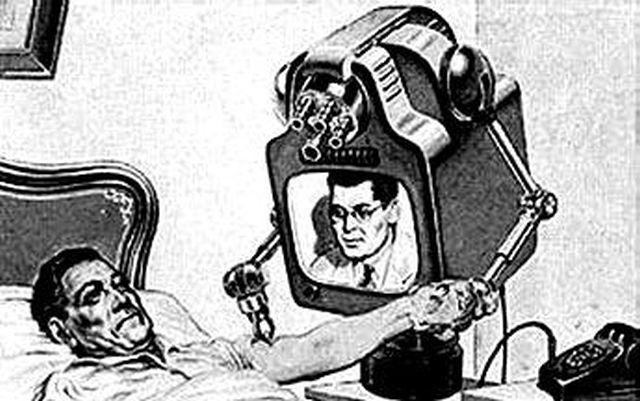Teledoctors vs Conventional Health Care: Which is Better?
Teledoctors vs Conventional Health Care: Which is Better?
Blog Article
Checking Out the Perks and Difficulties of Teledoctors in Modern Health Care
As the healthcare landscape progresses, teledoctors have arised as a critical part in connecting gaps in clinical access and performance. How can the medical care industry equilibrium these benefits with the fundamental difficulties?
Expanding Access to Treatment
Telemedicine has actually become a critical technology in modern-day healthcare, dramatically broadening accessibility to care for varied populaces. By leveraging digital modern technology, teledoctors have transformed the typical healthcare distribution model, making it possible for people in remote or underserved areas to obtain timely clinical consultation. This development is specifically advantageous for individuals staying in country communities, where the shortage of medical care facilities and experts usually leads to delayed or insufficient therapy.
Teledoctors contribute in connecting the space developed by geographical obstacles. Through online examinations, people can access a large range of medical care solutions without the need for substantial traveling. This is specifically advantageous for those with movement problems or persistent problems needing constant clinical focus. In addition, telemedicine boosts connection of treatment by making it possible for normal follow-ups and surveillance, thereby improving patient outcomes.
The assimilation of teledoctors right into health care systems also supports the monitoring of public wellness dilemmas by helping with rapid response and triage. Throughout pandemics, as an example, online assessments reduce the burden on physical medical care centers, reducing exposure threats for both clients and healthcare service providers. As telemedicine remains to evolve, it assures to reshape the landscape of medical care availability, making it much more inclusive and reliable.
Cost-Effectiveness of Teledoctors
The cost-effectiveness of teledoctors is a substantial factor driving their extensive fostering in medical care systems. By decreasing the requirement for physical framework and in-person gos to, teledoctors use an even more cost effective alternative to conventional health care distribution.
Moreover, teledoctors help with a much more reliable usage of healthcare resources by lessening unneeded emergency clinic check outs and health center admissions. Patients can access timely assessments for small disorders or follow-up care, which helps to reduce the concern on overstretched medical care centers. This efficiency not only causes set you back financial savings for doctor yet additionally reduces the monetary stress on individuals that could otherwise face costly health center costs.
Additionally, teledoctors can help in managing chronic diseases more effectively by providing consistent surveillance and prompt treatments. This positive technique can avoid problems, thereby reducing lasting treatment costs. Overall, teledoctors offer a sensible option to the intensifying costs of medical care, while preserving high quality treatment shipment.
Enhancing Client Convenience
While cost-effectiveness plays a pivotal role in the increase of teledoctors, boosting person ease stands as another engaging advantage of this health care design. With the combination of teledoctors, patients can bypass the commonly time-consuming process of scheduling and going to in-person visits. This design eliminates the demand for traveling, reducing time spent en route and waiting rooms, thus using considerable time financial savings for clients. Specifically for those with mobility issues or living in remote locations, teledoctors offer an essential link to treatment that might or else be hard to reach.
In addition, teledoctors provide adaptable scheduling, permitting individuals to organize appointments at times that ideal suit their specialist and personal dedications. This flexibility is vital for individuals stabilizing requiring work timetables or family duties, making sure that healthcare can be integrated flawlessly into their lives. In addition, the ability to accessibility physician from the convenience of one's home can result in enhanced patient involvement and adherence to treatment strategies, as the barriers to looking for care are lowered.
The comfort offered by teledoctors not only boosts the client experience but additionally adds to an extra responsive and reliable health care distribution system, inevitably supporting far better health results.
Resolving Privacy Problems
Amid the expanding fostering of teledoctors, privacy issues become a considerable factor to consider. As medical care increasingly counts on electronic platforms, guaranteeing the confidentiality of person information becomes vital. The digitization of clinical records and the usage of telecommunication modern technologies demand durable protection actions to shield delicate information from unapproved gain access to and breaches.
Doctor should follow rigorous guidelines, such as the Medical Insurance Mobility and Accountability Act (HIPAA) in the United States, which develops nationwide standards for safeguarding clinical info. Compliance with such regulations is crucial in keeping individual count on and ensuring their information is handled responsibly. Security of information, protected communication networks, and regular audits are some of the procedures that can be carried out to enhance information security.
Despite these other measures, obstacles continue. Cybersecurity threats are evolving, and medical care companies must continue to be cautious to brand-new vulnerabilities. Furthermore, educating both patients and medical care suppliers regarding ideal methods in data personal privacy is crucial. This includes understanding the restrictions of data and the importance of safe login credentials. teledoctors.
As teledoctors end up being more essential to medical care delivery, attending to personal privacy problems home is necessary to make sure both the efficiency and trustworthiness of these services.

Navigating the Digital Divide
Linking the electronic divide is a vital obstacle in the prevalent adoption of teledoctors. teledoctors. This divide includes variations in accessibility to electronic technology, especially amongst country, low-income, and elderly populations. These groups often do not have the necessary gadgets, trustworthy web connectivity, or digital literacy needed for effective involvement in telehealth solutions. Consequently, the advantages of teledoctors-- such as raised accessibility and convenience-- remain unreachable for numerous individuals who might most gain from them.
In addition, efforts to subsidize modern technology for low-income families can play a critical role in making certain equitable access. Medical care companies and community companies ought to team up to provide digital proficiency programs, empowering people to browse telehealth systems confidently.

Final Thought
The integration of teledoctors right into modern medical care provides substantial benefits, consisting of boosted access to care, cost-effectiveness, and boosted client ease. Nevertheless, obstacles such as privacy problems, the digital divide, and cybersecurity hazards should be resolved to optimize these advantages. By carrying out robust data defense steps, boosting digital literacy, and making certain protected technical infrastructure, the potential of teledoctors can useful site be totally understood, promoting equitable medical care delivery and transforming the healthcare experience for all individuals.

Report this page